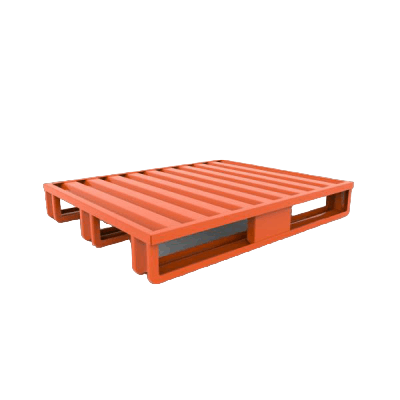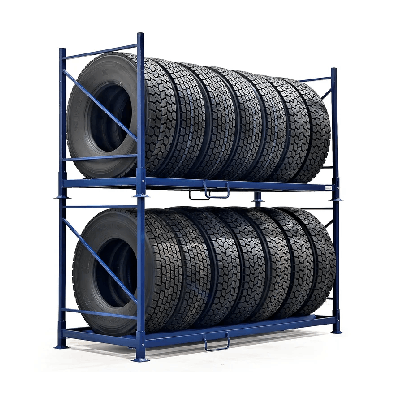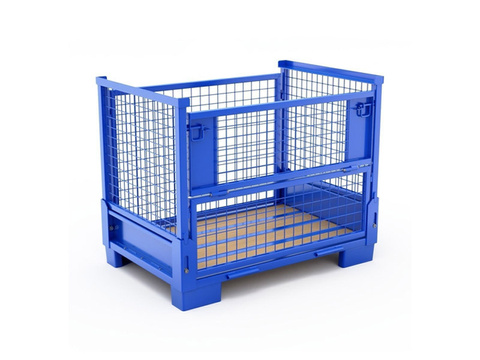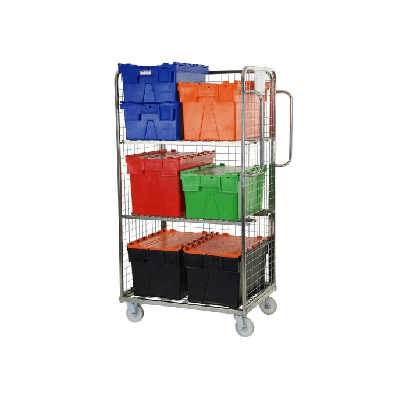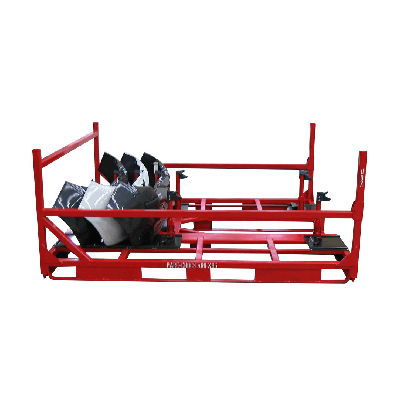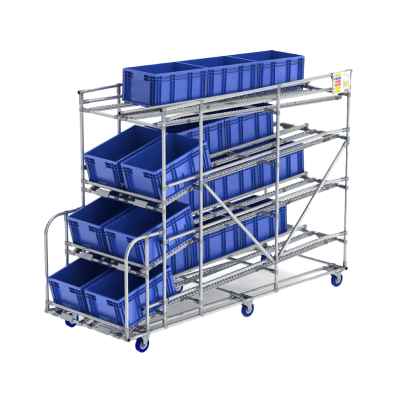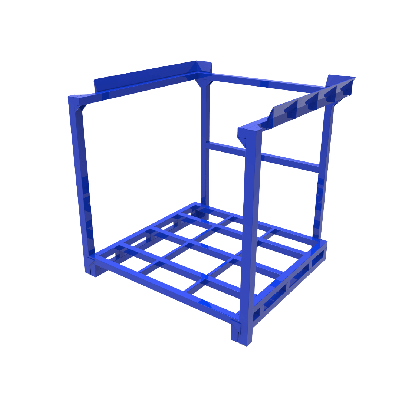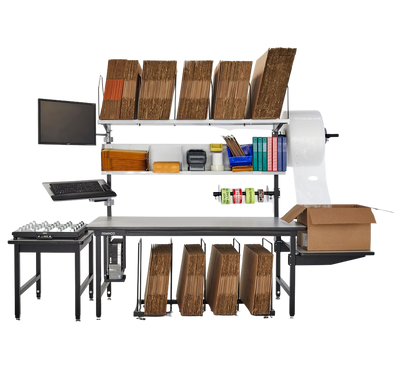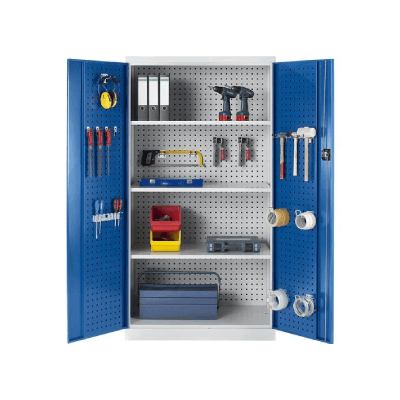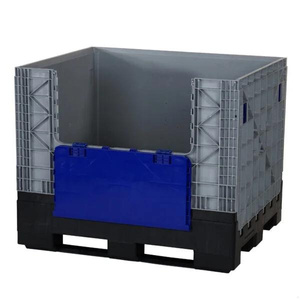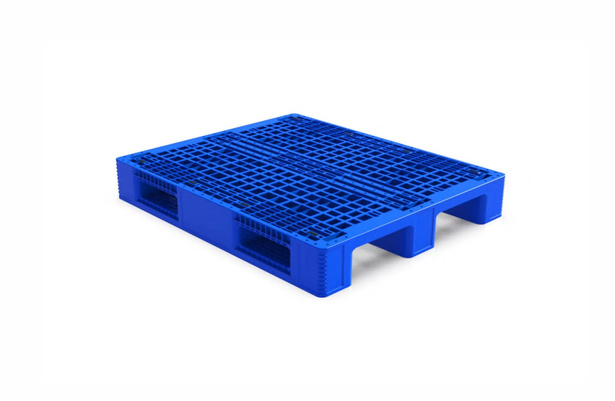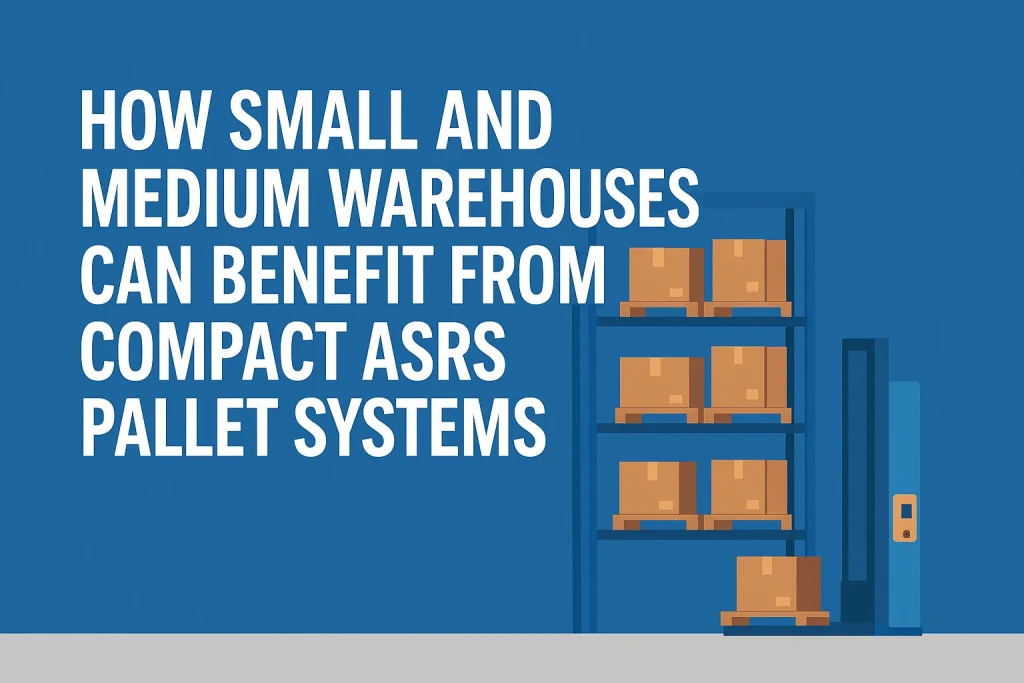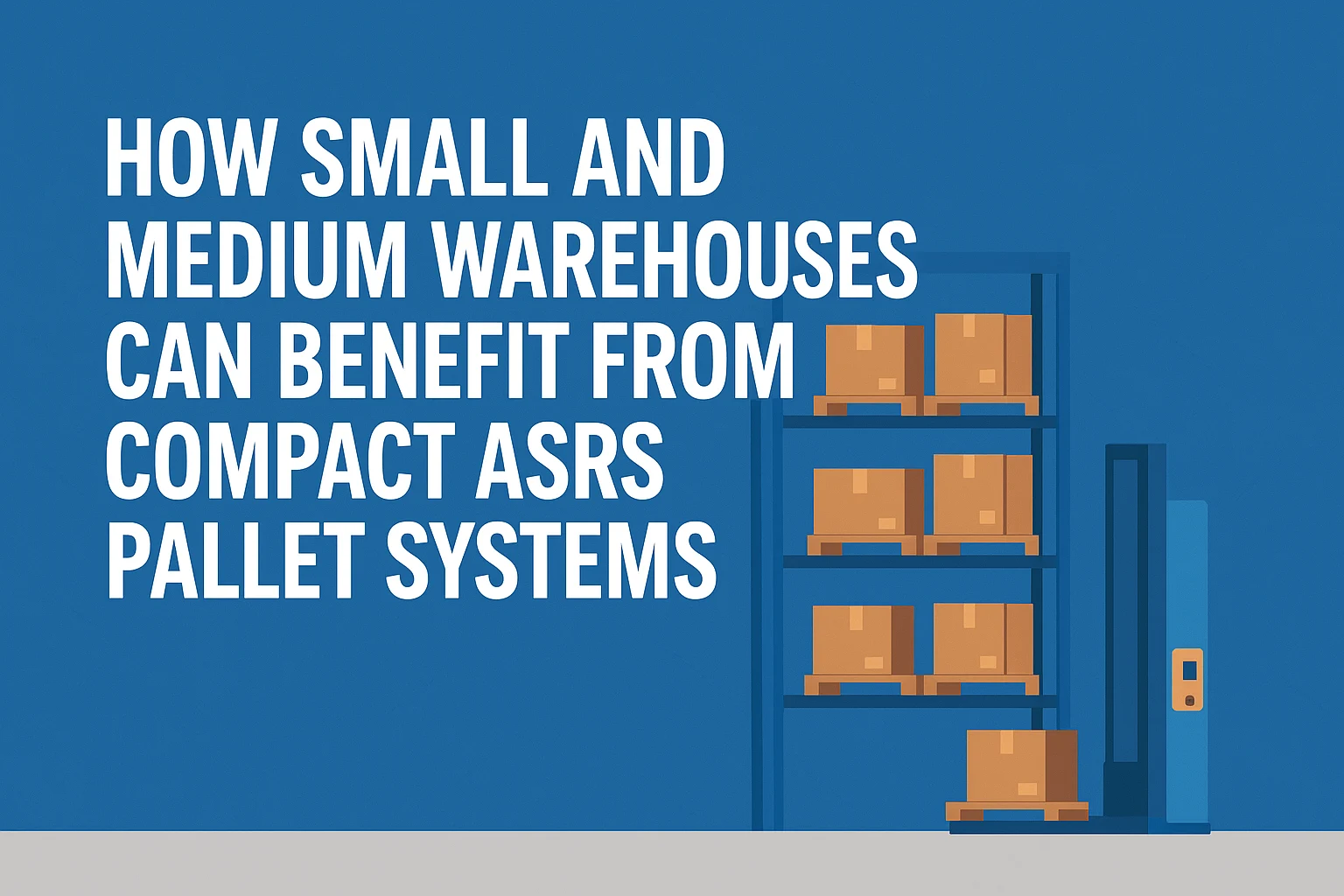In today’s logistics-driven world, warehouse efficiency and space optimization are more critical than ever. While large corporations can afford expansive facilities and high-end automation, small and medium-sized warehouses often operate with limited space, budget, and workforce. Yet, these businesses face the same pressure to deliver speed, accuracy, and consistency.
That’s where compact ASRS pallet systems come in. Designed to maximize vertical space, minimize human error, and enhance productivity, these systems are helping smaller warehouses achieve levels of efficiency once thought possible only for large-scale operations.
In this blog, we’ll explore how small and medium warehouses can leverage compact ASRS pallet systems, what benefits they offer, and how they can pave the way for long-term growth and competitiveness.
Table of Contents
Toggle1. What Exactly Is a Compact ASRS Pallet System?
The term ASRS Pallet stands for Automated Storage and Retrieval System for pallets. In simple terms, it’s an automated technology that stores and retrieves palletized goods using robotics, conveyors, and advanced software.
A compact ASRS differs from traditional systems by focusing on high-density storage within a smaller footprint. Instead of spreading storage across a wide area, it utilizes vertical space and efficient movement patterns to maximize every cubic meter of the warehouse.
In traditional setups, forklifts and human operators handle pallet movements, often leading to congestion, delays, and safety risks. Compact ASRS systems eliminate these bottlenecks by automating pallet handling through cranes, lifts, or shuttles controlled by a central management system. The result is smoother, faster, and safer warehouse operations.
2. The Rising Pressure on Small and Medium Warehouses
The modern supply chain landscape is evolving at lightning speed. Small and medium-sized warehouses face numerous challenges that make efficiency a constant struggle.
Firstly, space constraints are becoming a serious concern. With the rising cost of industrial real estate, expanding warehouse space isn’t always an option. At the same time, labor shortages have made it difficult to find and retain skilled workers, especially for physically demanding roles like pallet handling and inventory picking.
Additionally, customer expectations have shifted dramatically. Thanks to e-commerce and just-in-time delivery models, clients expect faster order fulfillment and nearly perfect accuracy. Even a small mistake can impact customer trust and profitability.
Lastly, inventory complexity has grown. With more product variations, fluctuating demand, and tighter delivery schedules, warehouses must handle larger SKU counts within the same limited space.
For these reasons, small and medium businesses are increasingly adopting automation to remain competitive — and compact ASRS systems are emerging as one of the most efficient solutions available.
3. Why Compact ASRS Systems Are a Perfect Fit for SMEs
Compact ASRS pallet systems offer a variety of benefits that make them especially suited for small and medium-sized warehouses. Let’s break down the main advantages.
a. Space Optimization
One of the most significant benefits is the ability to store more in less space. Compact ASRS systems utilize vertical height, often allowing storage up to several meters high. This approach can double or even triple storage capacity without expanding the facility’s footprint.
For warehouses in urban or space-limited areas, this optimization can make a dramatic difference in operational efficiency and long-term profitability.
b. Enhanced Labor Efficiency
Automation reduces reliance on manual labor, which not only minimizes fatigue and risk of injury but also allows workers to focus on more value-driven tasks such as quality assurance or process improvement.
With fewer manual movements, you can maintain productivity even with a smaller team — a critical advantage amid ongoing labor shortages.
c. Faster Throughput and Greater Accuracy
ASRS systems operate with precision and consistency. When an order comes in, the system retrieves the required pallet automatically, cutting down the time usually spent locating and moving items manually.
This high level of accuracy also reduces errors in order fulfillment, ensuring that the right product reaches the right customer every time.
d. Scalability and Flexibility
Compact ASRS pallet systems are modular, meaning you can start small and expand as your business grows. This flexibility allows warehouses to adapt to changing demand, new product lines, or business expansions without having to completely overhaul their storage infrastructure.
e. Cost Savings Over Time
While the initial cost of automation may appear considerable, the long-term benefits are significant. Reduced labor costs, fewer picking errors, and better space utilization all contribute to a faster return on investment. Over time, operational costs drop significantly as efficiency rises.
4. How Compact ASRS Systems Work
Understanding how compact ASRS systems function helps illustrate why they’re so transformative.
The system typically consists of high-density storage racks that hold pallets in multiple levels. Automated shuttles or cranes move along these racks, retrieving and placing pallets as directed by a Warehouse Management System (WMS).
The WMS acts as the brain of the operation, managing inventory data, optimizing storage locations, and ensuring the right items are retrieved at the right time. When an order is placed, the system automatically identifies where the required pallet is stored, retrieves it, and delivers it to the designated picking or shipping station.
This process eliminates manual searching, reduces traffic from forklifts, and ensures a continuous, organized flow of goods throughout the warehouse.
5. The Importance of Data and Integration
Today’s warehouses thrive on data. Compact ASRS systems are not just mechanical storage units — they’re intelligent, connected systems that integrate seamlessly with your existing software.
By linking the ASRS with your WMS or ERP system, you gain real-time visibility into your inventory. You’ll always know exactly where each pallet is located, how much stock is available, and what’s being moved.
This data-driven approach allows for more accurate forecasting, better decision-making, and stronger control over warehouse operations. It also supports predictive maintenance, where the system can alert operators before potential issues occur, preventing downtime and unexpected repair costs.
6. Key Benefits at a Glance
The practical benefits of compact ASRS pallet systems can be summarized through their impact on daily operations:
- Maximized Space Usage: Every inch of warehouse height and depth is optimized.
- Reduced Labor Dependency: Automation handles repetitive and physically demanding tasks.
- Improved Accuracy: Minimal human error means better order fulfillment.
- Scalable Design: Easy to expand as the business grows.
- Energy Efficiency: Optimized movement paths and smart controls save energy.
- Better Inventory Control: Real-time tracking enhances visibility and reduces waste.
- Faster Fulfillment: Quicker retrieval times lead to faster shipping cycles.
These advantages collectively create a leaner, smarter, and more resilient warehouse operation.
7. Real-World Applications Across Industries
Compact ASRS pallet systems are not limited to one type of business. They’re being adopted across multiple industries that require precision, space efficiency, and reliability.
In food and beverage industries, for example, compact ASRS systems help maximize cold storage space, which is often expensive to maintain. In e-commerce and retail, they enable quick and accurate order picking to meet high customer expectations.
Manufacturers use them to store raw materials and finished goods, ensuring a smooth production flow. Pharmaceutical companies benefit from the controlled environments and traceability these systems provide, while automotive warehouses rely on them for storing and retrieving heavy components safely.
Regardless of the sector, the common theme is clear: automation delivers consistency and scalability, two things small and medium businesses need most.
8. Overcoming Implementation Challenges
Transitioning to automation can seem daunting, but it doesn’t have to be. Here are some ways small and medium warehouses can overcome common implementation challenges:
a. Start Small
Begin with a modular system that covers your most critical storage areas. Once you see the benefits, you can scale up gradually. This phased approach minimizes risk and spreads out investment costs.
b. Work with Experienced Partners
Choosing a knowledgeable automation provider ensures that the system is tailored to your specific needs, layout, and growth plans. The right partner will guide you from design through implementation and ongoing support.
c. Train Your Team
Even the best technology needs skilled operators. Providing staff with proper training ensures that they can manage and maintain the system confidently, leading to better results and smoother adoption.
d. Plan for Integration
Before installation, evaluate how the ASRS will connect to your existing software systems. Seamless integration ensures a unified flow of data, preventing inefficiencies or duplication of work.
9. The Future of Automation for Small and Medium Warehouses
The warehouse industry is rapidly moving toward automation, and small to medium operations are no longer being left behind. Thanks to advances in robotics, artificial intelligence, and modular system design, compact ASRS technology has become more affordable and accessible than ever.
These systems not only enhance productivity but also contribute to sustainability by reducing energy consumption and optimizing resource use. As environmental responsibility becomes a bigger focus for businesses worldwide, adopting efficient automation solutions adds both economic and ethical value.
In short, compact ASRS pallet systems are more than just a trend — they represent the future of warehouse management for growing businesses.
Conclusion:-
Compact ASRS pallet systems offer small and medium warehouses an unprecedented opportunity to compete at a higher level. By combining efficiency, accuracy, and scalability, they solve many of the challenges that smaller operations face daily — from space limitations to labor constraints.
Implementing such a system isn’t just about automation; it’s about future-proofing your business, improving customer satisfaction, and setting a foundation for sustainable growth.
For businesses seeking a reliable and innovative partner in this transformation, Kole Pallet provides modern, adaptable solutions that can be tailored to meet your warehouse’s unique needs. With the right technology and strategy in place, even the smallest warehouse can achieve world-class efficiency.
Frequently Asked Questions:-
1. What is a compact ASRS pallet system?
- A compact ASRS pallet system is an automated storage and retrieval solution designed to maximize warehouse space and improve efficiency. It uses robotics and intelligent software to move pallets in and out of high-density storage racks with precision and speed, making it ideal for warehouses with limited floor space.
2. How can compact ASRS systems benefit small and medium-sized warehouses?
- Compact ASRS systems help small and medium warehouses by optimizing vertical space, reducing manual labor, and increasing accuracy in order fulfillment. They also enhance safety, streamline inventory management, and deliver faster throughput without requiring warehouse expansion.
3. Are compact ASRS pallet systems expensive to install?
- While the initial cost of installing a compact ASRS pallet system may seem high, it offers a strong return on investment over time. Reduced labor costs, minimized picking errors, and more efficient use of space lead to significant long-term savings and improved productivity.
4. Can compact ASRS systems be integrated with existing warehouse management software?
- Yes, most compact ASRS systems are designed to integrate seamlessly with Warehouse Management Systems (WMS) and Enterprise Resource Planning (ERP) software. This integration allows for real-time inventory tracking, better visibility, and automated data sharing across your entire supply chain.
5. What industries can benefit the most from compact ASRS pallet systems?
- Compact ASRS pallet systems are versatile and beneficial for many sectors, including food and beverage, e-commerce, manufacturing, pharmaceuticals, and automotive industries. Any warehouse that needs to save space, improve efficiency, or increase order accuracy can gain value from adopting this technology.

